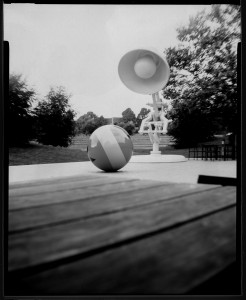Need to get some weather information? The website forecast.io has a nice web based service you can use up to one thousand times a day for free. I was thinking of using it for an automated sprinkler application, but just to test it, I wrote this simple chunk of python to try it out. To use it yourself, you’ll need to get your own API key and modify it to use your own latitude and longitude. It’s not that amazing, but you might find it of use.
[sourcecode lang=”python”]
#!/usr/bin/env python
# __ _
# / _|___ _ _ ___ __ __ _ __| |_
# | _/ _ \ ‘_/ -_) _/ _` (_-< _|
# |_| \___/_| \___\__\__,_/__/\__|
#
# A python program which used some publically available
# web apis to find out what the forecast will be.
#
# You’ll need an API key below… you get 1000 requests per day for free.
# Go to forecast.io and sign up.
API="PUT_YOUR_OWN_API_KEY_HERE"
URL="https://api.forecast.io/forecast/"
# Your latitude and longitude belong here, I use SF for example
LAT= 37.7833
LNG=-122.4167
directions = ["N", "NNE", "ENE", "E", "ESE", "SSE", "S", "SSW", "WSW", "W", "WNW", "NNW"]
def bearing_to_direction(bearing):
d = 360. / 12.
return directions[int((bearing+d/2)/d)]
import sys
import os
import time
import optparse
import json
import urllib2
now = time.time()
cached = False
if os.path.exists("WEATHER.cache"):
f = open("WEATHER.cache")
parsed = json.loads(f.read())
f.close()
if now – parsed["currently"]["time"] < 900:
cached = True
if cached:
print "::: Using cached data…"
else:
print "::: Reloading cache…"
req = urllib2.Request(URL+API+"/"+("%f,%f"%(LAT,LNG)))
response = urllib2.urlopen(req)
parsed = json.loads(response.read())
f = open("WEATHER.cache", "w")
f.write(json.dumps(parsed, indent=4, sort_keys=True))
f.close() ;
c = parsed["currently"]
print ":::", time.strftime("%F %T", time.localtime(c["time"]))
print "::: Conditions:", c["summary"]
print "::: Temperature:", ("%.1f" % c["temperature"])+u"\u00B0"
print "::: Dew Point:", ("%.1f" % c["dewPoint"])+u"\u00B0"
print "::: Humidity:", ("%4.1f%%" % (c["humidity"]*100.))
print "::: Wind:", int(round(c["windSpeed"])), "mph", bearing_to_direction(c["windBearing"])
d = parsed["daily"]["data"][0]
print "::: High:", ("%.1f" % d["temperatureMax"])+u"\u00B0"
print "::: Low:", ("%.1f" % d["temperatureMin"])+u"\u00B0"
d = parsed["hourly"]["data"]
for x in d[:12]:
print time.strftime("\t%H:%M", time.localtime(x["time"])), x["summary"], ("%.1f" % x["temperature"])+u"\u00B0"
[/sourcecode]

